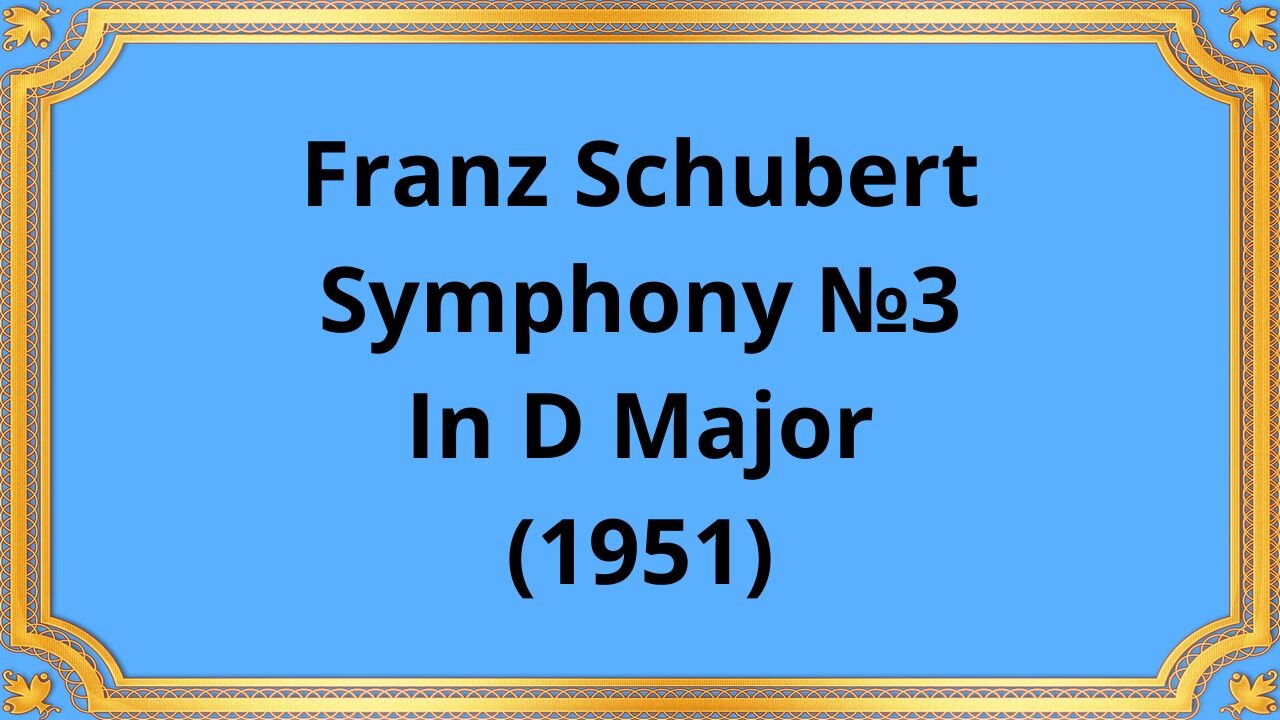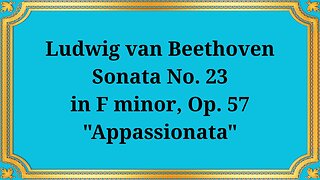Premium Only Content

Franz Schubert Symphony №3 In D Major (1951)
#FranzSchubert #SymphonyNo3 #ClassicalMusic #Dmajor #Composer #OrchestralMusic #ClassicalEra #MusicComposition #MusicHistory #MusicalMasterpiece
Publication date 1951
Thor Martin Johnson Conductor
Cincinnati Symphony Orchestra
Franz Schubert, a prolific composer of the Classical and Romantic eras, left an indelible mark on the world of music with his Symphony No. 3 in D Major. This masterful composition, often overshadowed by his later symphonies, showcases Schubert’s melodic prowess and innovative orchestration.
Schubert’s Symphony No. 3, completed when he was just 18 years old, exudes a youthful exuberance and vitality. The opening movement, marked Adagio maestoso – Allegro con brio, immediately captivates the audience with its bold and spirited introduction. The thematic material unfolds with grace and elegance, displaying Schubert’s innate ability to craft memorable melodies that resonate with profound emotional depth.
In the second movement, a graceful Menuetto, Schubert demonstrates his adeptness in employing classical forms while infusing them with his distinctive voice. The charming interplay between the woodwinds and strings evokes a sense of bucolic serenity, transporting the listener to idyllic pastoral landscapes.
The symphony reaches its culmination in the vibrant Finale, a lively Presto vivace that brims with effervescent energy. Schubert’s adept orchestration and innovative harmonic progressions infuse the movement with an infectious sense of joy and exuberance, leaving an indelible impression on the listener.
Schubert’s Symphony No. 3 in D Major, despite its relative brevity, serves as a testament to the composer’s prodigious talent and unwavering musical vision. Its amalgamation of classical forms with Schubert’s distinct melodic language exemplifies the transitional nature of the symphonic genre during the early 19th century.
This symphony stands as a compelling embodiment of Schubert’s burgeoning genius and foreshadows the remarkable contributions he would make to the world of music in the years to come. Its timeless allure continues to captivate audiences and serves as a testament to Schubert’s enduring legacy as a trailblazing composer of the Romantic era.
In conclusion, Franz Schubert’s Symphony No. 3 in D Major stands as a testament to the composer’s remarkable precocity and unyielding creativity. Its melodic inventiveness, harmonic richness, and structural ingenuity position it as a quintessential work of the classical symphonic repertoire. As we immerse ourselves in the resplendent sounds of this symphony, we are reminded of Schubert’s unparalleled ability to craft music that transcends temporal boundaries and speaks to the depths of the human experience.
Through Symphony No. 3, Schubert invites us to partake in a musical odyssey that traverses the realms of joy, introspection, and exultation, leaving an indelible imprint on our hearts and minds.
You have the opportunity to support the channel:
https://destream.net/live/RadSiarAl/donate
-
 23:19
23:19
Classical music_Music Inspiration
3 days agoLudwig van Beethoven Sonata No. 23 in F minor, Op. 57 "Appassionata"
231 -
 2:07:31
2:07:31
The Connect: With Johnny Mitchell
11 hours ago $1.50 earnedSecrets Of The Cocaine Cowboys: Miami Drug Lord Reveals Truth About His BILLION-DOLLAR Coke Empire
13K -
 DVR
DVR
BlackDiamondGunsandGear
1 day agoGlocks Want Gun Control? // Trump Tramples on your Rights? // After Hours Armory
12.8K1 -
 DVR
DVR
DLDAfterDark
7 hours ago $0.76 earnedDLD Live! Trump - Flag Burning - Glock & Gun Control - Martial Law Light?? - After Hours Armory
8.56K -
 LIVE
LIVE
GritsGG
13 hours agoRumble Customs! 3515 Ws! 🫡!
301 watching -
 5:59:47
5:59:47
SpartakusLIVE
8 hours agoThe HUGEST Brain (not forehead) delivers Saturday SPARTOONS || Variety Later - Shadow of Mordor
181K4 -
 2:34:20
2:34:20
Barry Cunningham
9 hours agoPRESIDENT TRUMP WELCOMES FOOTBALL SEASON! AND MORE BREAKING NEWS!
72.6K45 -
 54:47
54:47
Side Scrollers Podcast
13 hours agoSide Scroller Presents KING OF THE KART | MASSIVE MARIO KART TOURNAMENT
41.7K -
 4:12:33
4:12:33
Mally_Mouse
13 hours ago🔥🍺Spicy HYDRATE Saturday!🍺🔥-- Let's Play: Baldur's Gate!
34.2K3 -
 2:26:32
2:26:32
BooniesHQ
8 hours agoGame Of SKATE Shaun Hover Vs. Jeff DeChesare: Boonies Skate Night 1
108K5